Just looking for our Best HVAC Website examples list?
Why Great HVAC Website Design Is the Key to Growth
In this competitive industry, your website is more than a digital brochure—it’s your first impression, your sales rep, and your top-performing employee. With most potential customers searching for HVAC services online before ever picking up the phone, a professionally crafted web design can make or break the decision to contact your team—or move on to a competitor.
A high-performing website isn’t just about looking good. It’s about using responsive design to ensure mobile accessibility, structuring every service page to answer specific customer needs, and guiding visitors toward fast, seamless conversions. Whether you offer installations, repairs, or 24/7 emergency support, your online presence should reflect your professionalism, build trust, and turn visits into booked jobs.
In this guide, we’ll break down the critical elements of HVAC website design—what sets the best HVAC companies apart and how to create a website that improves user experience, enhances lead generation, and expands your service area reach. Let’s dive into what it takes to transform your HVAC business through smarter, results-driven web design.
Website Planning & Purpose: Laying the Foundation for a Profitable Website
Before diving into layout, images, or content, companies must take a strategic approach to website planning. The planning phase is where the groundwork is laid for a site that doesn’t just look professional—but actually performs. For HVAC business owners, this means focusing on more than just aesthetics. It’s about aligning every page and function with the goals of increasing leads, improving user experience, and showcasing your expertise in a clear, compelling way.
Start by defining the primary goals of your website. Are you trying to capture more local leads? Promote seasonal HVAC services? Streamline online booking for customers across your service area? Once these goals are clarified, everything from your sitemap to your homepage messaging becomes easier to map out.
Next, assess your target audience. Residential and commercial customers often seek different types of HVAC solutions. Your website should speak to both where relevant, but organize content in a way that allows each type of visitor to find what they need quickly. Service pages should clearly define offerings such as installations, maintenance, and emergency repairs. Include location-based content to improve local search visibility and connect with customers in the areas you serve.
Site structure also plays a critical role in guiding visitors through their journey—from learning about your services to contacting your team. Use intuitive navigation, clear calls-to-action, and streamlined service categories. A well-organized, easy-to-navigate website keeps users engaged and helps Google understand and rank your site better.
For an in-depth look at how strong planning can transform your online presence, visit our complete HVAC website design guide. It’s packed with insights on how to build a lead-generating digital storefront that works around the clock.
Design Principles That Drive Performance
In this industry, great web design is about functionality, clarity, and conversion. When potential customers land on your site, they should instantly understand who you are, what you offer, and how to take the next step. That requires design rooted in strategy and usability.
First, clarity is critical. Your homepage should clearly state the HVAC services you provide and the areas you serve. Use bold headlines, simple navigation, and a layout that guides the visitor through their journey without distraction. Every page should have a clear call-to-action, whether it’s scheduling a service, requesting a quote, or calling for emergency HVAC support.
Responsive design is non-negotiable. With more than half of your traffic likely coming from mobile devices, your website must load quickly and look sharp on all screen sizes. A mobile-friendly layout enhances user experience and boosts your search rankings in Google’s algorithm.
Visual hierarchy is another essential principle. Use contrasting colors, intentional spacing, and font sizing to highlight the most important information. Service pages should be visually scannable with well-placed subheadings, icons, and images that support the message without clutter.
Design should also reinforce trust. Use real project photos, verified reviews, certifications, and badges to build credibility. Many companies often overlook the power of visual proof—simple additions like photos of your technicians on the job or logos of manufacturer certifications can make a big difference.
Finally, design should support SEO performance. A well-structured site with logical internal linking, fast-loading pages, and optimized image assets sets the foundation for visibility in search. For deeper guidance on combining great design with HVAC SEO best practices, explore our detailed insights on HVAC SEO success.
Structuring Content and Navigation for Websites That Convert
Clear, strategic content paired with intuitive navigation is essential for converting visitors into paying customers. Your website must guide users effortlessly to the information they need—whether it’s learning about furnace installation or booking an AC repair.
Start with a logical navigation structure. The main menu should include top-level pages like Home, Services, About, Service Areas, Reviews, Blog, and Contact. For companies offering multiple services, it’s important to break down service offerings into individual pages—such as Air Conditioning Repair, Furnace Installation, Duct Cleaning, and Emergency Services. This improves user experience and supports SEO by targeting specific keywords on each service page.
Content should be clear, direct, and aligned with how potential customers search. Begin each page with a headline that instantly communicates the value you provide. Use short paragraphs, bullet points, and subheadings to make content scannable. Incorporate internal links that navigate visitors to related services or relevant articles on your blog to keep them engaged and informed.
Be sure to include geographic references to strengthen local SEO. Mention your service areas on the homepage and create dedicated landing pages for high-priority cities or neighborhoods. This helps search engines connect your site with local search queries and increases visibility in your target regions.
Navigation should be accessible across all devices. Include a mobile-friendly menu that keeps key sections within one or two taps. Add prominent buttons for booking service, requesting quotes, or calling—especially on mobile, where users are likely to take action quickly.
Finally, enrich your site with trust-building content like testimonials, FAQs, and blog articles that answer common customer questions. If you’re not sure what to write about, our article on marketing for HVAC companies shares proven content strategies that can position your business as a local leader.
Visual Elements That Strengthen Your Brand and Guide User Experience
Visuals play a powerful role in shaping perception, building trust, and helping users quickly understand your offerings. The right visual strategy enhances user experience and reinforces your brand identity from the moment someone lands on your website.
Start with photography that feels real and relatable. Stock images can appear generic, so whenever possible, use professional photos of your technicians in the field, branded trucks, and completed HVAC installations. These images build credibility and show potential customers that your business is established and active in the community.
Brand consistency is critical. Your website’s color scheme should match your company’s logo and uniforms, creating visual cohesion across digital and physical touchpoints. Use fonts and button styles consistently to support brand recognition and make the site feel polished and professional.
Visual hierarchy is key to directing attention. Headlines should stand out clearly, buttons should be visually distinct, and important details like pricing, service benefits, and CTAs must pop off the page. Use icons to break up text and highlight features like 24/7 availability, same-day service, or financing options—this makes scanning content much easier.
Animations and motion effects should be subtle and purposeful. Simple transitions when hovering over a service tile or a fade-in testimonial can enhance engagement without overwhelming the user. Use white space to prevent visual clutter and guide the eye toward key sections.
Infographics and visual aids can be used to explain complex HVAC topics—like how different HVAC systems work or when seasonal maintenance is needed. These can elevate your content and increase time on site, which supports both engagement and SEO performance.
Incorporating strong visual elements doesn’t just make your site attractive—it makes it easier for visitors to understand your services, trust your business, and take action. When designed well, visuals move beyond aesthetics and become a strategic tool for growth.
Ongoing WordPress Maintenance for HVAC Websites
For professionals relying on their website to generate leads and book services, ongoing WordPress maintenance is not optional—it’s essential. A well-maintained website ensures your online presence stays secure, fast, and functional, while also supporting your marketing and SEO performance over time.
Regular updates to WordPress core files, plugins, and themes are critical. Outdated components can create vulnerabilities that hackers exploit, putting your site and customer data at risk. By staying current, you reduce the chances of downtime or unexpected errors that can disrupt your business operations or turn away potential customers.
Website speed and performance must also be monitored consistently. Over time, sites can become bloated with unnecessary plugins, outdated scripts, or unoptimized images. Routine optimization keeps your pages loading quickly, which is especially important for mobile users and for retaining traffic from local search.
Backup management is another key piece of maintenance. Automated daily or weekly backups provide a safety net, allowing your site to be restored quickly in case of an error, server crash, or security breach. This kind of preparedness protects your investment and gives you peace of mind.
Security scanning and uptime monitoring help detect issues before they impact your customers. A broken contact form, expired SSL certificate, or spam-filled blog comment section can erode trust. Proactive maintenance ensures that these problems are addressed before they become visible liabilities.
As your HVAC services evolve, so should your website content. Updating service areas, seasonal promotions, pricing, and testimonials ensures your site remains relevant and accurate. Keeping your content fresh also signals to search engines that your site is active, supporting long-term SEO performance.
Ongoing WordPress maintenance is the behind-the-scenes work that allows your HVAC website to continue performing at a high level, no matter the season or customer demand. It’s the difference between a site that slowly breaks down and one that continues to generate leads efficiently and reliably.
Best HVAC Website Design Examples
Here are 20 of the best HVAC company websites across the world, including five designed by our agency’s experts. Each example includes its location, three takeaways about what makes the site effective, and a working URL for you to peruse.
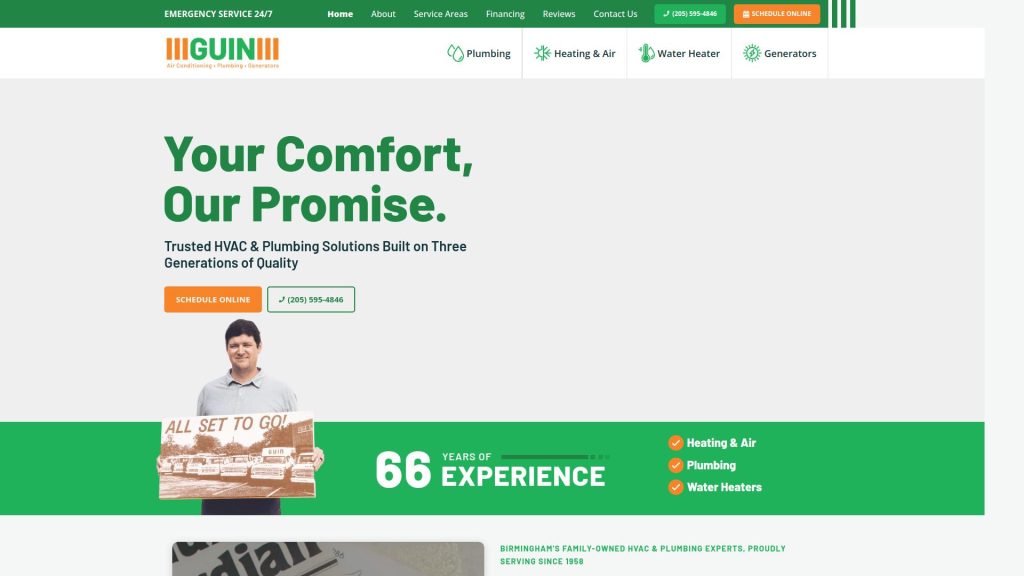
1. Guin Service
Location: Tulsa, OK
- Consistent brand colors increase memorability
- Prominent CTA makes scheduling easy
- Branded service van image reinforces credibility
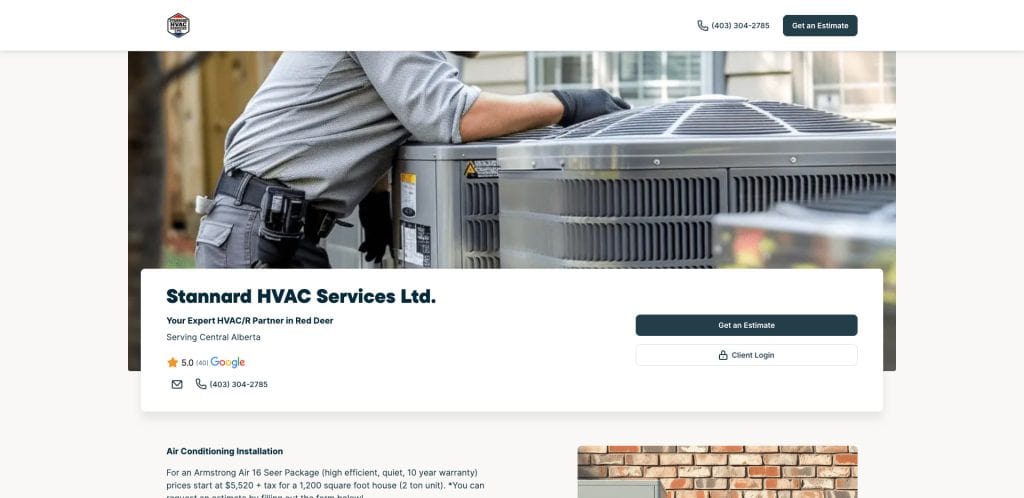
2. Stannard HVAC Services
Location: Spokane, WA
- Simple contact methods and estimate forms
- Google Business integration showcases reviews
- Jobber-built backend ensures fast deployment
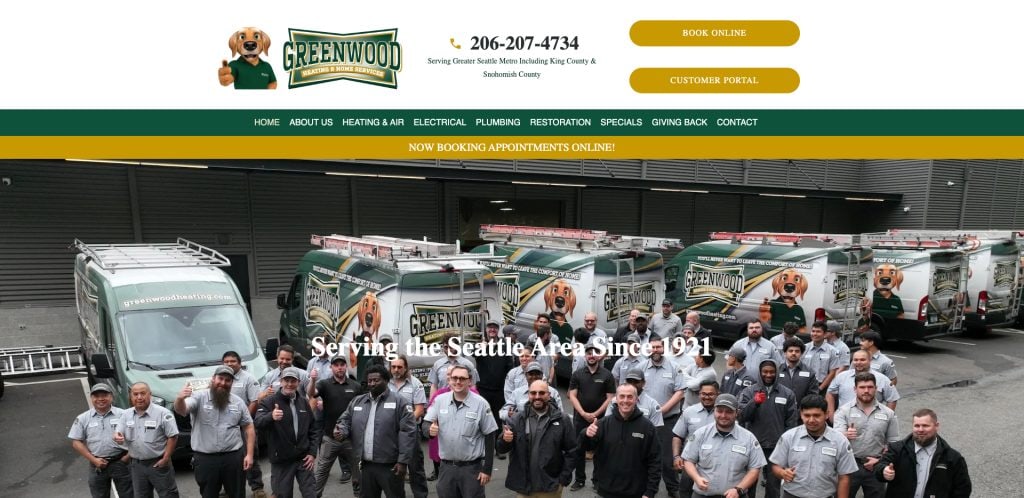
3. Greenwood Heating
Location: Portland, ME
- Friendly team photo builds trust
- Fully responsive and mobile-ready
- Clear CTAs guide visitors efficiently
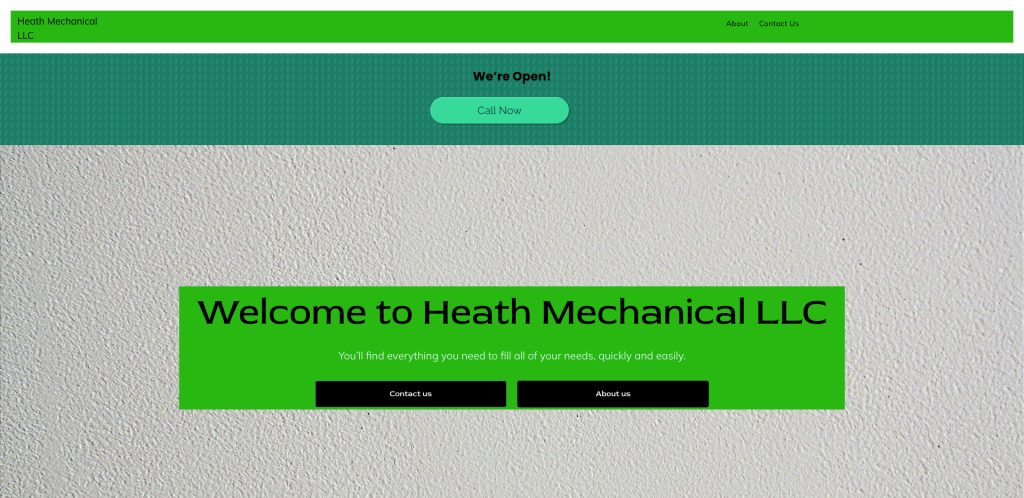
4. Heath Mechanical Services
Location: Phoenix, AZ
- Offers email, text, phone, and “Schedule Service” options
- Color-coded contact buttons simplify choice
- Online booking improves user flow
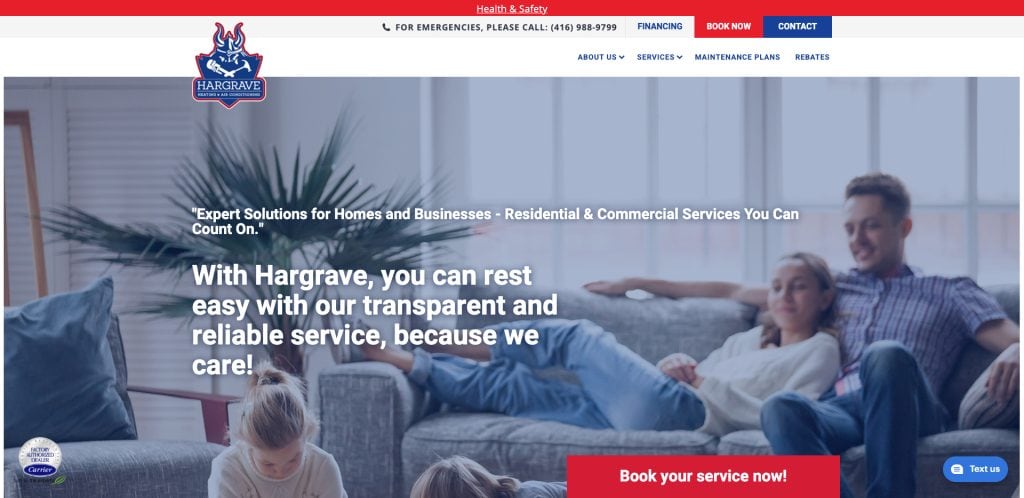
5. Hargrave Heating & Air Conditioning
Location: St. Louis, MO
- “Book Now” CTA leads to online form
- Jobber integration streamlines service request
- Focused on quick lead capture
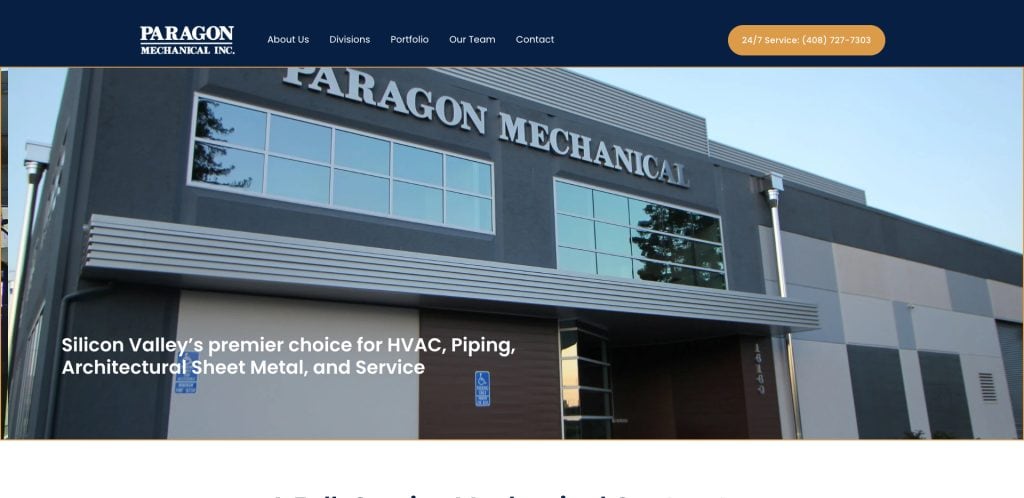
6. Paragon Mechanical Inc.
Location: Bay Area, CA
- Full-width hero slider featuring team and projects
- Four-column service showcase with rich imagery
- Bold CTA encourages calls
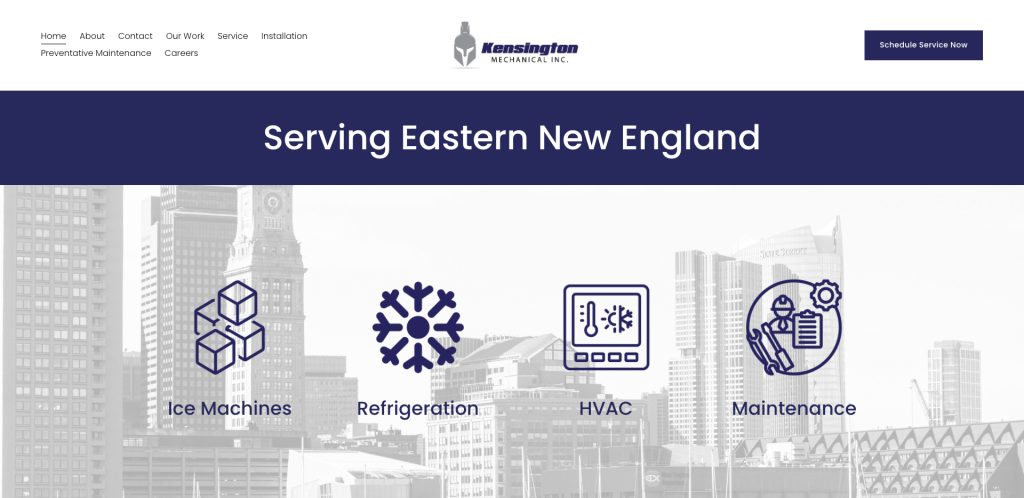
7. Kensington Mechanical Inc.
Location: Bay Area, CA
- Hero photo builds personal connection
- Clear navigation and quote CTA
- Embedded video enhances engagement
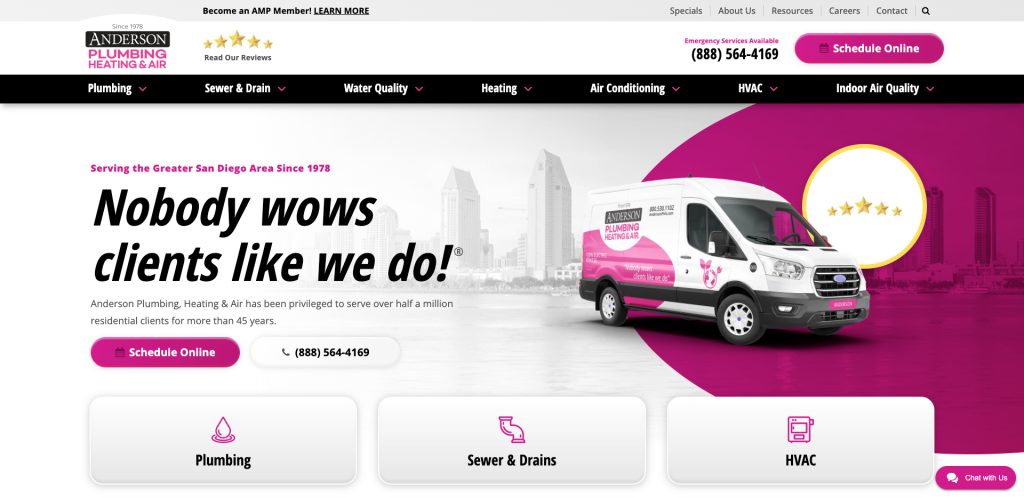
8. Anderson Plumbing Heating & Air
Location: San Diego, CA
- Eye-catching pink CTA for appointments
- Icon-based “What We Do” breakdown
- Visible social links improve credibility
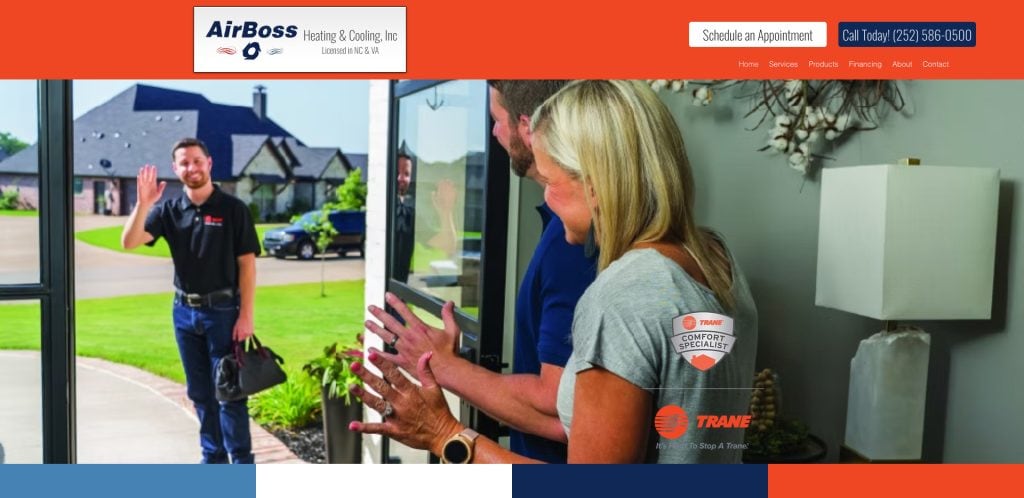
9. AirBoss Heating & Cooling
Location: Durham, NC
- Awards and testimonials shown prominently
- Crisp visuals and responsive layout
- Conversion-focused design with clear CTAs
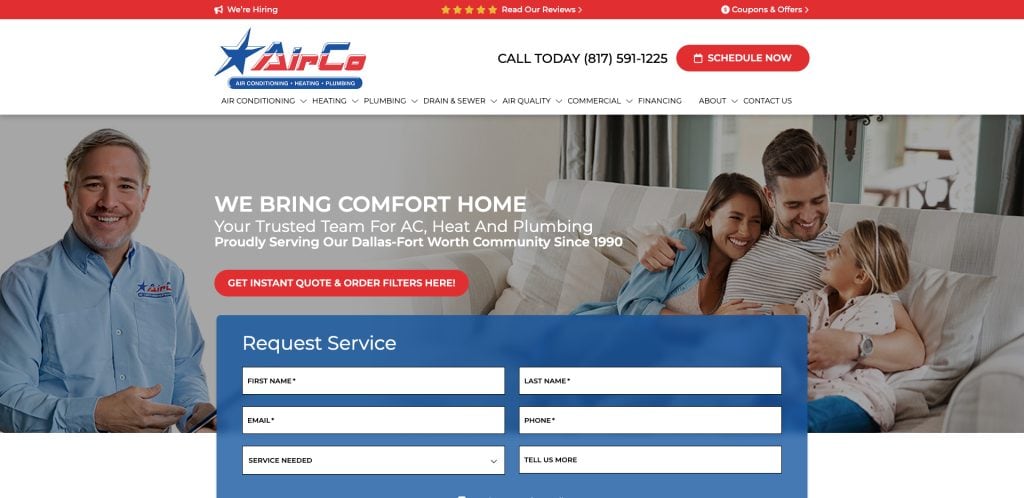
10. Aircor Heating and Cooling
Location: Houston, TX
- Clean, modern layout with strong service focus
- Dedicated page structure for clarity
- Client testimonials promote trust
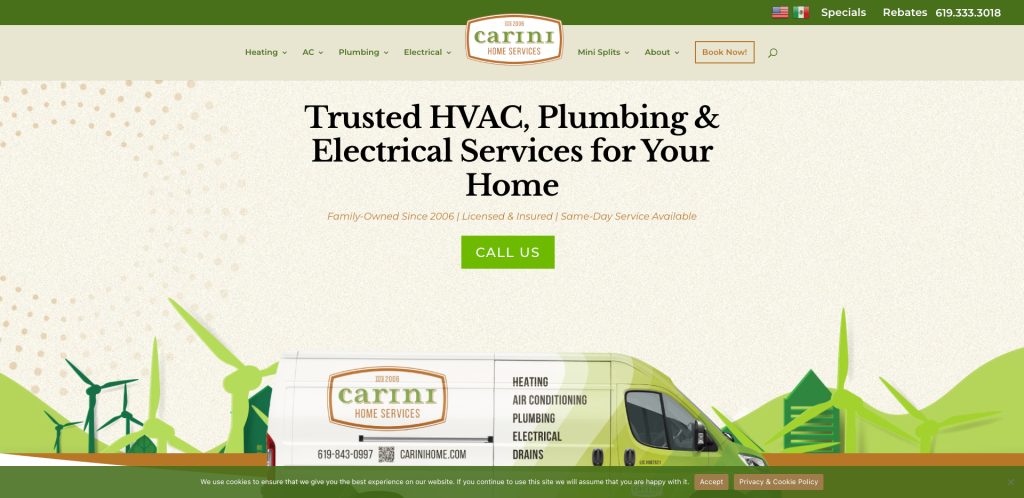
11. Carini Home Services
Location: San Diego, CA
- Balanced whitespace with eco-focused visuals
- Multiple CTAs and live chat enhance interaction
- Footer includes contact and coupon info
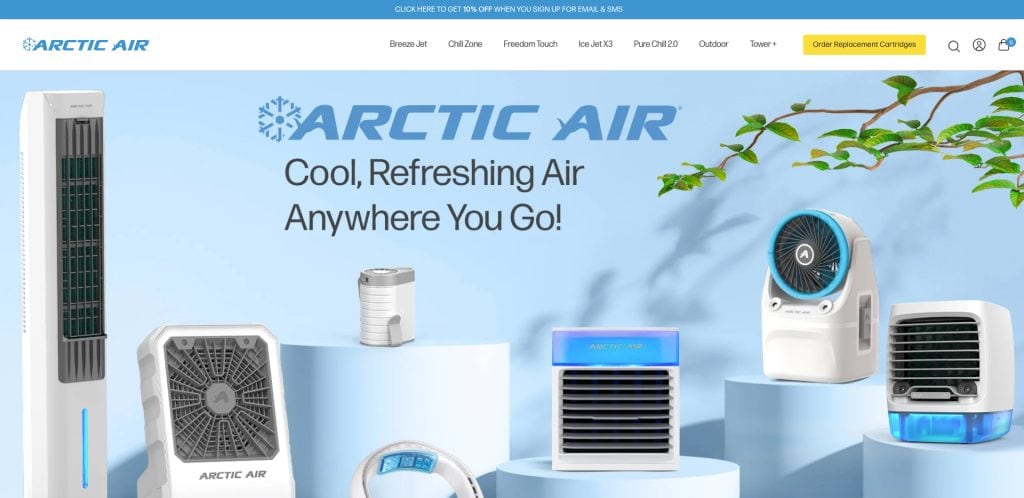
12. Arctic Air
Location: Raleigh, NC
- Sticky navigation boosts accessibility
- Partner logos build credibility
- Quote CTA repeated for emphasis
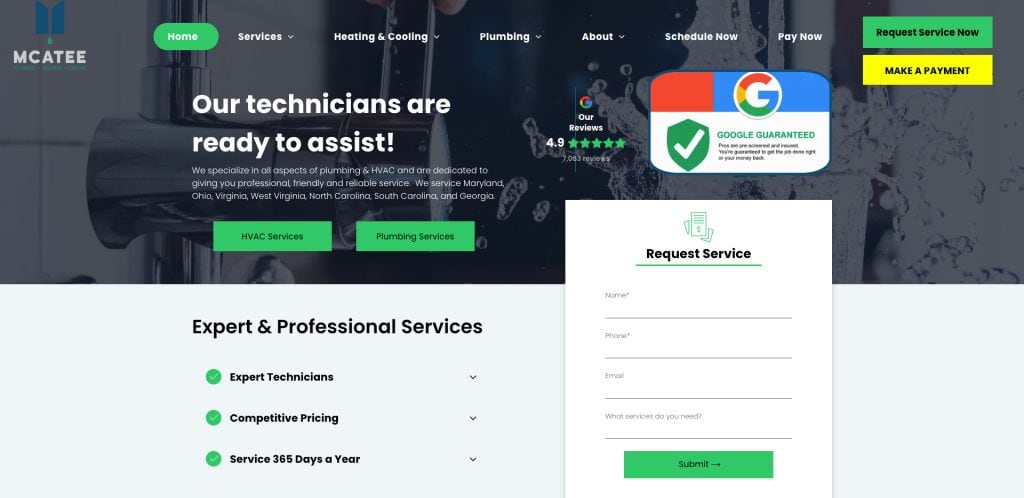
13. McAtee Plumbing Heating & Cooling
Location: Nashville, TN
- Transparent pricing plans provide clarity
- Embedded map aids local navigation
- Chat widget encourages engagement
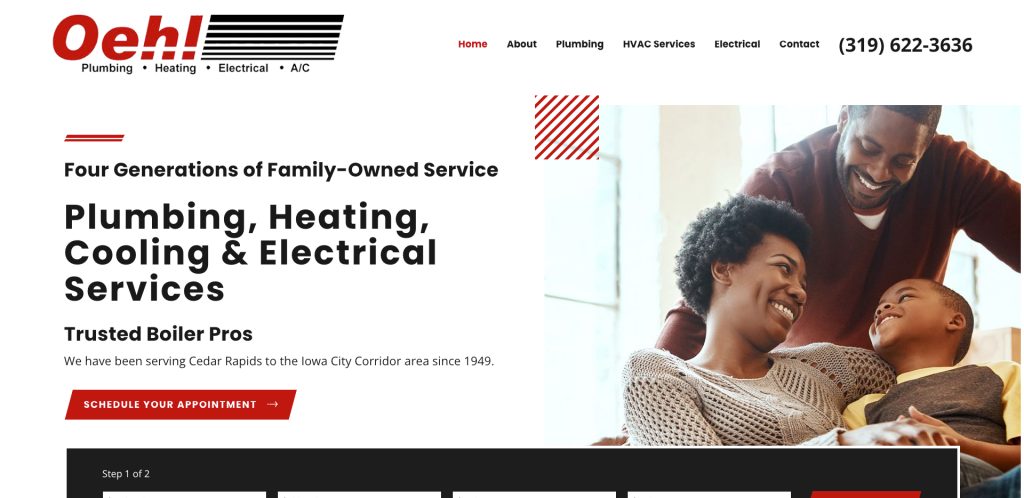
14. Oehl Plumbing and Heating
Location: Columbus, OH
- Searchable navigation improves usability
- Contact widgets are visible throughout
- Testimonial carousel enhances trust
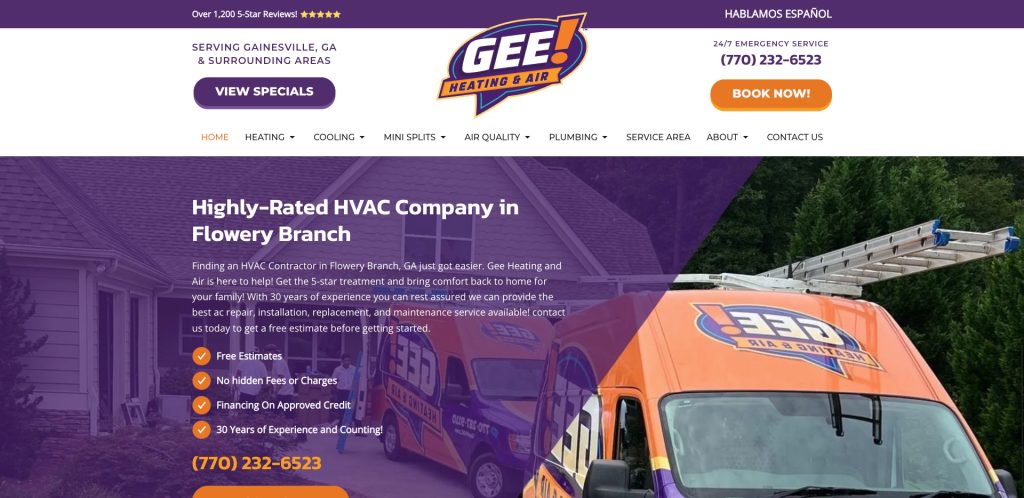
15. GEE! Heating & Air
Location: Milwaukee, WI
- Clean design with awards and contact info
- Drop-down menu organizes services
- Solid testimonial placement for credibility
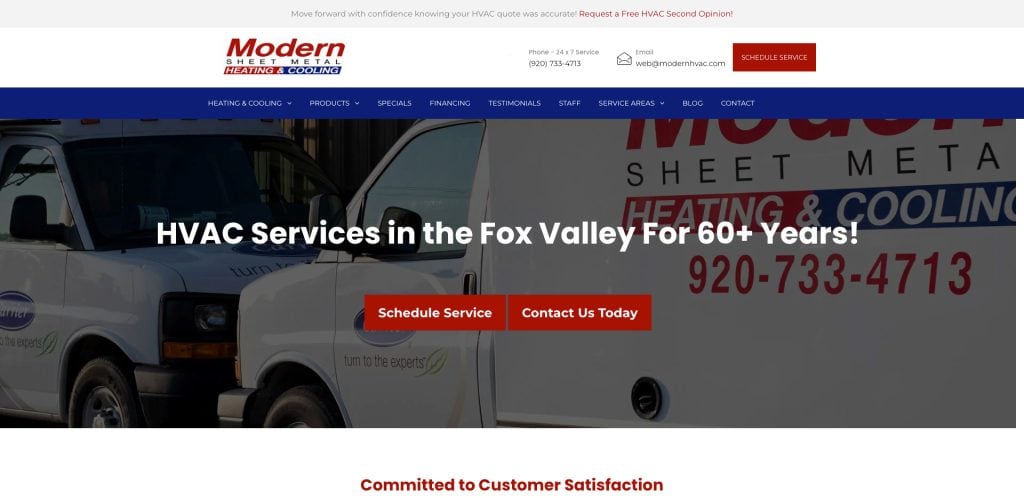
16. Modern HVAC
Location: Denver, CO
- Sharp, intuitive navigation
- SEO-optimized content for local reach
- Visually engaging design aids brand recall
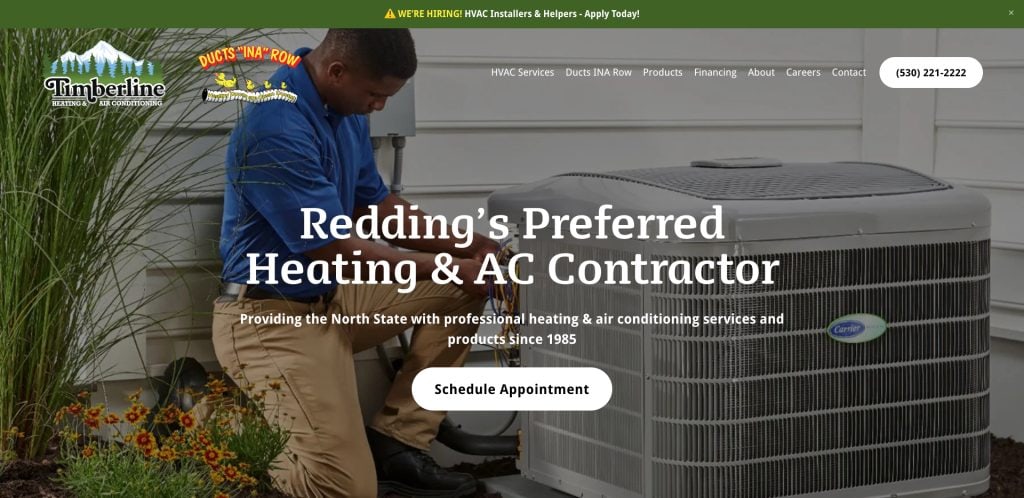
17. Timberline HVAC
Location: Boise, ID
- Clear navigation enhances usability
- Responsive design across devices
- High-quality visuals invite exploration
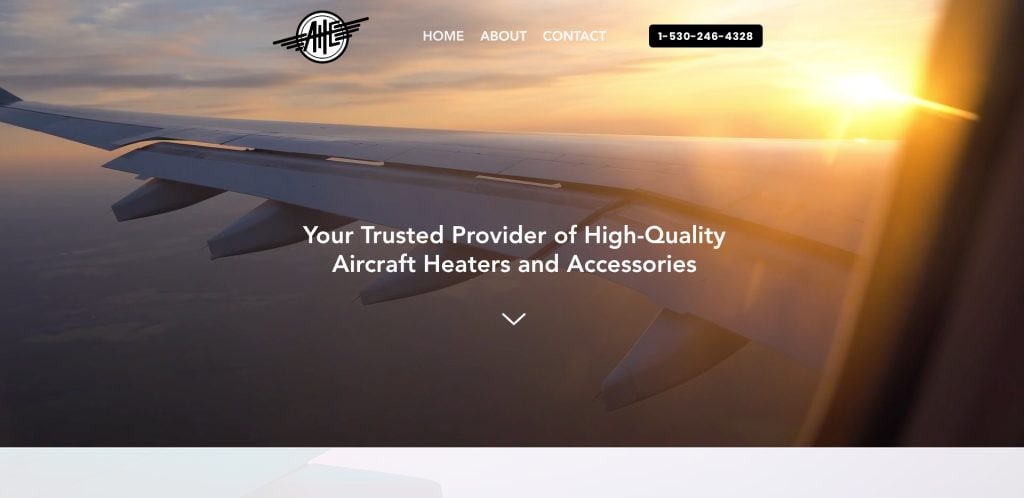
18. Aircraft Heating
Location: Seattle, WA
- Simple layout with clear usability
- Consistent branding builds trust
- Fast loading improves engagement
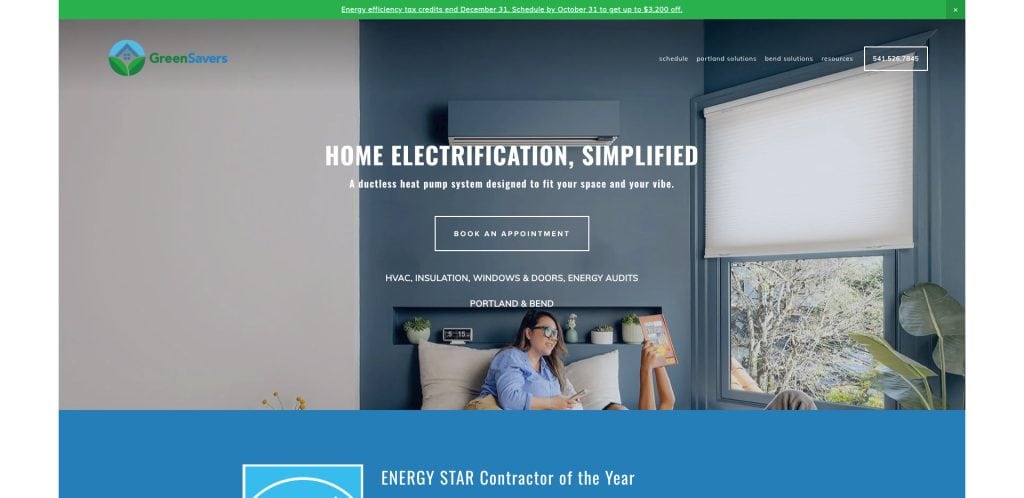
19. GreenSavers
Location: Portland, OR
- Eco-friendly messaging aligns with visuals
- User-friendly interface with strong CTAs
- Environment-focused branding supports identity
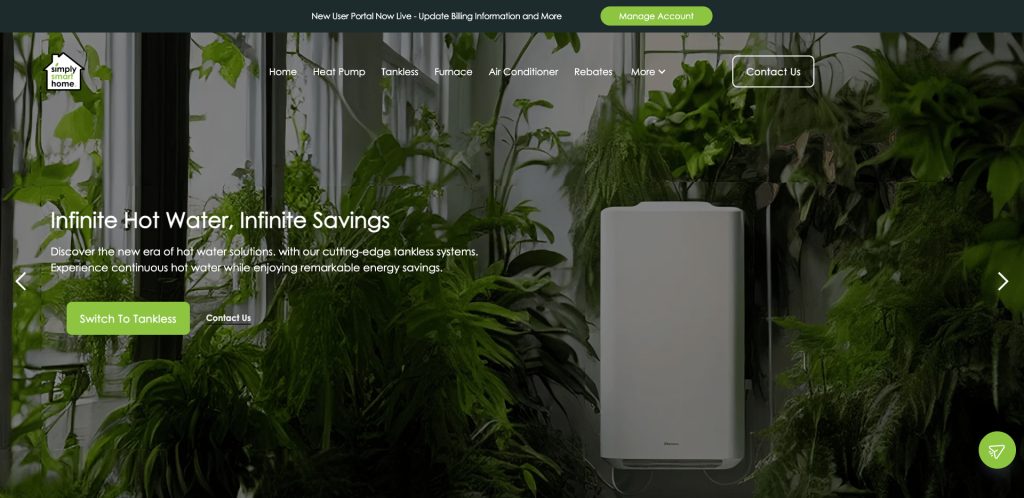
20. Simply Smart Home
Location: Canada
- Integrates HVAC with smart-home solutions
- Clean, engaging visual layout
- Conversion-focused CTAs support booking
These examples demonstrate successful strategies from navigation clarity to brand consistency, showcasing both general best practices and CyberOptik-designed excellence across diverse regions.
Turn Your HVAC Website Into a Lead-Generating Powerhouse
A well-designed website is vital for any HVAC business looking to grow. It’s not just about having an attractive design—it’s about building a professional website that effectively showcases your services, converts visitors into leads, and reflects the credibility of your brand. Whether you’re launching a new company or optimizing your site for local visibility, every design element must support your business goals.
Now is the time to move beyond website builders and generic templates. You need a design that effectively navigates visitors, supports online booking systems, and adapts to how users interact with it across devices. From improving your website performance to optimizing it for local search, our team of professionals is ready to help you position your HVAC company for long-term success.
Need a professional HVAC website designed to generate leads and grow your business? Request your free strategy session with our experts today.
FAQs About HVAC Website Design
What makes a website effective?
An effective website is user-friendly, mobile-friendly, and built with professional design and content that clearly presents your specific HVAC services. It includes buttons that move visitors toward taking action, such as requesting a quote or booking service. A site that performs well is optimized for speed, security, and SEO to help generate leads for your HVAC business consistently.
How do I optimize my website for local search?
Optimizing your website for local search terms means incorporating city or region-specific keywords throughout your website, including in page titles, meta descriptions, service area pages, and schema markup. It’s crucial for HVAC businesses to claim and manage their Google Business Profile, and to include location-based content and internal links like our strategies for HVAC marketing to boost local authority.
Why is mobile-friendly design so important for HVAC companies?
Mobile-friendly design is essential because a growing number of website visitors are searching for HVAC and plumbing services from their phones. If your website is not responsive or difficult to use on smaller screens, you risk losing those users. A mobile-optimized, professional website ensures your HVAC services are accessible, fast-loading, and easy to navigate on any device.
What should my website include to attract more leads?
To create a website that attracts and converts leads, your site should include service pages for specific HVAC services, customer testimonials, a clear call to action, contact forms, and an online booking feature. Throughout your website, use trust-building visuals and professional design to reinforce credibility and engage them toward scheduling service or making inquiries.
How can I make my HVAC website stand out from competitors?
To make your website stand out, focus on professional design, custom visuals, and content that speaks directly to your audience. Avoid template-driven website builders and instead invest in design and development that reflects your brand. Using website visuals like technician photos, badges, and testimonials builds trust, while educational content like HVAC SEO tips demonstrates expertise.
How often should I update my website?
A successful website design isn’t static. Regular updates are crucial for SEO and user trust. You should frequently refresh your blog, check all internal links, add seasonal promotions, and update service offerings or pricing. This ensures your website is optimized to remain competitive and relevant, especially as new HVAC technologies and customer expectations evolve.
Do I need different pages for each HVAC service?
Yes, creating separate pages for each of your services helps with SEO and improves user experience. Visitors can quickly find exactly what they need, whether it’s heating repair, AC installation, or HVAC system inspection. This also helps ensure your website ranks for specific search queries tied to those services, making it easier to reach potential clients.
What role does design play in website performance?
Professional design affects every part of how visitors interact with your website. From navigation to contact forms, good design ensures your website is designed to be intuitive and compelling. It helps spirit visitors toward taking action and plays a critical role in establishing trust and authority. Investing in effective website design is one of the most impactful strategies for your website to generate results.
Can my website help with customer retention?
Absolutely. Beyond attracting new customers, your website can help retain clients by offering resources like HVAC maintenance tips, reminders, and service agreements. A user-friendly website also supports ongoing relationships by making it easy to schedule recurring services or request inspections directly through your website.
How do I choose the right website design company?
When selecting a design partner, look for website design companies that specialize in design for this industry and understand the needs of service-based businesses. They should have a proven track record in creating responsive, SEO-friendly websites that convert visitors into leads. Look at their portfolio and reviews to ensure they can create a website that attracts and retains customers, showcases your services, and supports your long-term growth goals.



